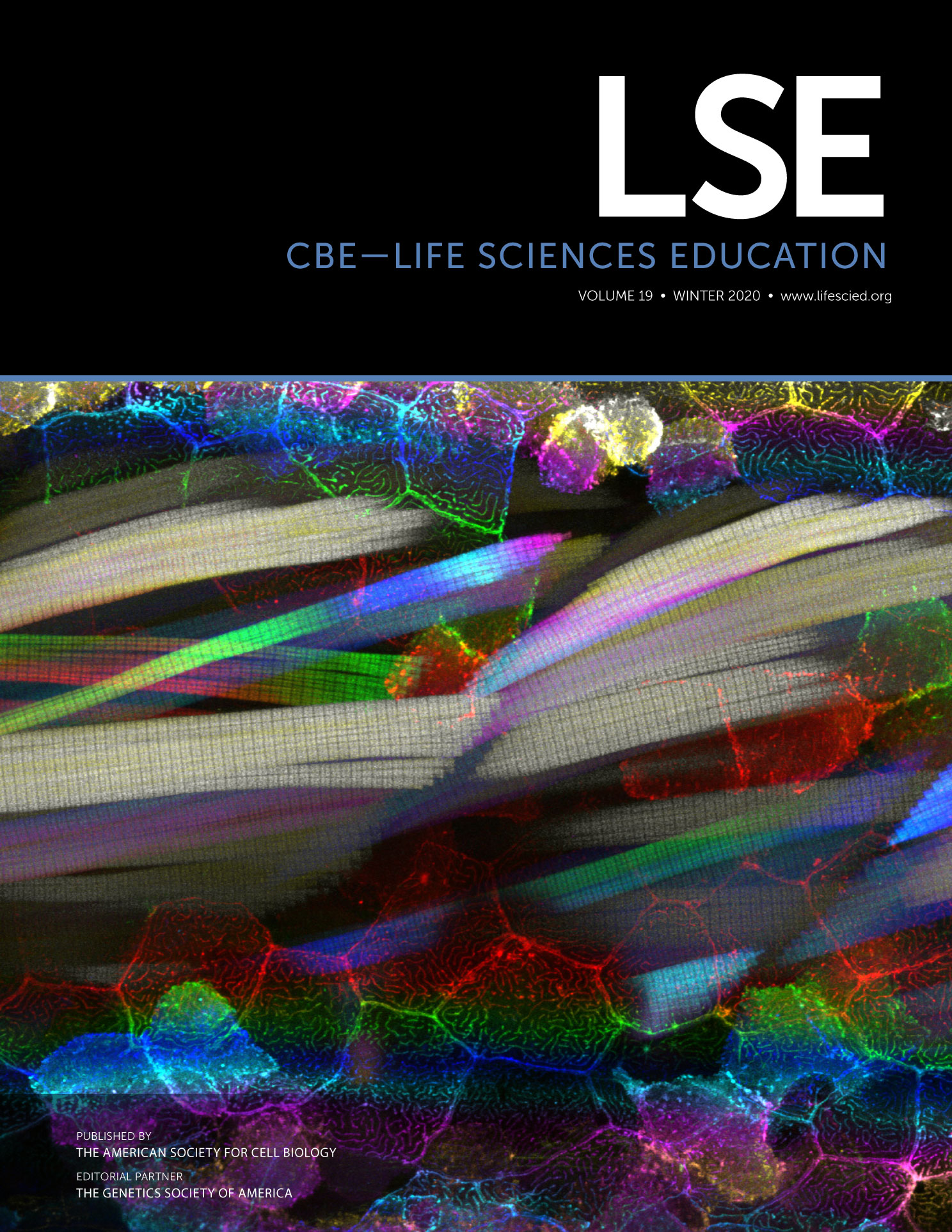Biosensors Show Promise as a Measure of Student Engagement in a Large Introductory Biology Course
Abstract
This study measured student engagement in real time through the use of skin biosensors, specifically galvanic skin response (GSR), in a large undergraduate lecture classroom. The study was conducted during an intervention in an introductory-level biology course (N = 420) in which one section of the course was taught with active-learning approaches and the other with traditional didactic teaching. GSR results were aligned and correlated with the Classroom Observation Protocol for Undergraduate STEM, or COPUS, and student self-reflections on their own engagement. Results showed that the active-learning section spent more time working in groups, resulting in GSR measures that trended higher and self-reported engagement, while showing indications of higher content learning gains compared with the traditional lecture section. Comparisons between COPUS scores and GSR readings indicate that engagement increased during group work and decreased during listening activities. Throughout a class period, GSR activity of the active-learning group showed increased trends compared with baseline measures, while the traditional lecture group showed decreased trends. Results indicate that GSR is a promising measure of real-time student engagement in the undergraduate classroom, bringing a new technique to discipline-based education researchers who aim to better measure student engagement; however, some limitations exist for broad-scale implementation.



